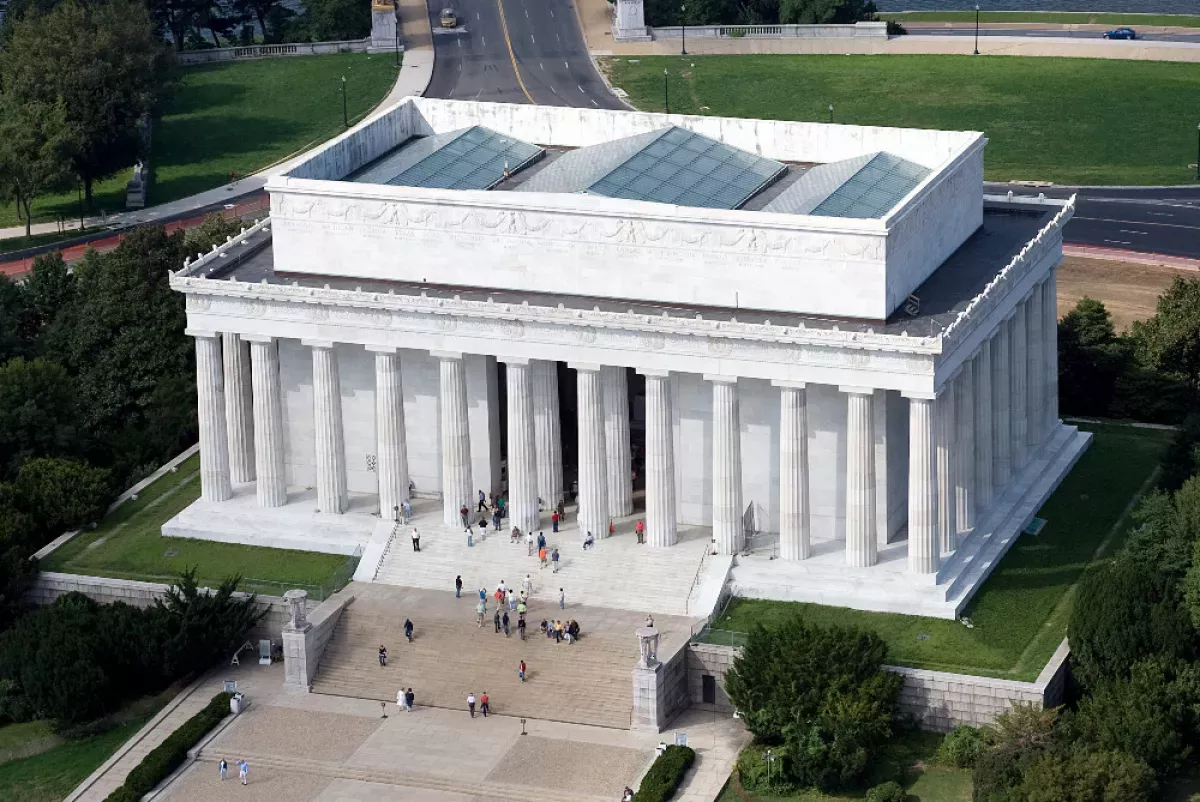The Lincoln Memorial, located on the National Mall in Washington, D.C., honors Abraham Lincoln, the 16th U.S. president. Designed in a neoclassical style by Henry Bacon, it features Daniel Chester French's Statue of Abraham Lincoln and interior murals by Jules Guerin. Dedicated in 1922, it's a significant tourist attraction and has served as a symbolic center for race relations and civil rights.
1901: First Bill Introduced for Memorial Commission
In 1901, Senator Shelby M. Cullom introduced the first of several bills in Congress to incorporate a new memorial commission for the Lincoln Memorial, but it was defeated.
1901: McMillan Plan Designated Site
In 1901, the McMillan Plan designated the Potomac Park site as the location for a future monument comparable to the Washington Monument.
1902: Second Bill Introduced for Memorial Commission
In 1902, a second bill was introduced in Congress for the incorporation of a new memorial commission, but it was defeated.
1908: Fifth Bill Introduced for Memorial Commission
In 1908, the fifth bill was introduced in Congress for the incorporation of a new memorial commission, but it met with defeat.
1909: Lincoln Cent Depiction
Since 1909, the United States one-cent coin has depicted a bust of Abraham Lincoln on its front.
December 13, 1910: Senate Bill 9449 Passed
On December 13, 1910, Senate Bill 9449, which proposed the incorporation of a new memorial commission, was passed after previous attempts failed.
1913: Congress Approves Design and Location
In 1913, Congress approved the Lincoln Memorial Commission's choice of design and location for the memorial.
February 12, 1914: Groundbreaking Ceremony
On February 12, 1914, the groundbreaking ceremony for the Lincoln Memorial was conducted by M. F. Comer, Joseph C. S. Blackburn, and Henry Bacon. Actual construction began the following month.
1920: Statue of Abraham Lincoln Designed
In 1920, Daniel Chester French designed the Statue of Abraham Lincoln for the Lincoln Memorial. The Piccirilli brothers carved the statue in marble.
1920: Decision to Substitute Open Portal
In 1920, the decision was made to substitute an open portal for the bronze and glass grille which was to have guarded the entrance of the Lincoln Memorial.
May 30, 1922: Lincoln Memorial Dedicated
On May 30, 1922, the Lincoln Memorial was dedicated by Commission president William H. Taft and presented to President Warren G. Harding on behalf of the American people. Lincoln's son, Robert Todd Lincoln, attended the event.
1922: 48 Stone Festoons Added
In 1922, the 48 stone festoons were added above the columns of the Lincoln Memorial, representing the 48 states at that time.
1929: Metal Slats and Floodlights Installed
In 1929, metal slats were installed in the ceiling of the Lincoln Memorial to conceal floodlights, supplementing the natural light to better illuminate the statue.
1929: Memorial on Five-Dollar Bill
Since 1929, the Lincoln Memorial has appeared on the back of the U.S. five-dollar bill. The front of the bill features Lincoln's portrait.
1939: Marian Anderson Performance
In 1939, after the Daughters of the American Revolution refused to allow Marian Anderson to perform before an integrated audience at Constitution Hall, a performance was arranged on the steps of the Lincoln Memorial on Easter Sunday for a live and radio audience.
1939: Mr. Smith Goes to Washington
In Frank Capra's 1939 film "Mr. Smith Goes to Washington", the Lincoln Memorial and its inscription inspire Senator Jefferson Smith. Filming at the Memorial was done discreetly due to Park Service restrictions.
June 29, 1947: Truman's NAACP Speech
On June 29, 1947, Harry Truman became the first president to address the NAACP at the Lincoln Memorial during their convention, advocating for an end to discrimination through comprehensive civil rights legislation.
1959: Lincoln Memorial on One-Cent Coin
From 1959, which was the 150th anniversary of Lincoln's birth, to 2008, the Lincoln Memorial, with the statue visible through the columns, was depicted on the reverse of the United States one-cent coin.
August 28, 1963: "I Have a Dream" Speech
On August 28, 1963, Martin Luther King Jr. delivered his famous "I Have a Dream" speech at the Lincoln Memorial during the March on Washington for Jobs and Freedom.
October 15, 1966: Listed on National Register of Historic Places
On October 15, 1966, the Lincoln Memorial was listed on the National Register of Historic Places.
May 9, 1970: Nixon's Meeting with Protesters
On May 9, 1970, President Richard Nixon had a middle-of-the-night impromptu meeting at the Lincoln Memorial with protesters who were preparing to march against the Vietnam War after the Kent State shootings.
August 28, 1983: 20th Anniversary Mobilization
On August 28, 1983, crowds gathered at the Lincoln Memorial to mark the 20th Anniversary Mobilization for Jobs, Peace and Freedom.
1989: Undercroft Tours Halted
In 1989, regular tours of the undercroft below the Lincoln Memorial were abruptly stopped after a visitor noticed asbestos and notified the National Park Service.
2003: Memorial Featured in Numerous Films
By 2003, the Lincoln Memorial had appeared in over 60 films, demonstrating its prominence in American culture.
2003: King's Speech Spot Engraved
In 2003, the spot where Martin Luther King Jr. stood during his "I Have a Dream" speech was engraved on the landing eighteen steps below Lincoln's statue to mark the 40th anniversary of the event.
2007: Ranked on AIA's List of America's Favorite Architecture
In 2007, the Lincoln Memorial was ranked seventh on the American Institute of Architects' list of America's Favorite Architecture.
2008: End of Memorial Depiction on Cent
In 2008, the depiction of the Lincoln Memorial on the reverse of the United States one-cent coin came to an end.
2009: Compilation of Memorial's Film Appearances
In 2009, Mark S. Reinhart compiled short sketches of dozens of uses of the Lincoln Memorial in film and television.
2016: Prominence in Popular Culture
In 2016, Mitchell Newton-Matza noted the cherished place of the Lincoln Memorial in the hearts of Americans and its frequent appearance in popular culture, particularly in motion pictures.
2017: Filming Restrictions at the Memorial
As of 2017, the National Park Service prohibited filming and photography above the white marble steps and within the interior chamber of the Lincoln Memorial, leading to the use of digital visual effects in many appearances of the memorial.
2022: Memorial's Centennial
In 2022, the Lincoln Memorial celebrated its centennial, marking 100 years since its dedication.
2023: Undercroft Rehabilitation Project Started
In 2023, work began on a $69 million rehabilitation project of the undercroft of the Lincoln Memorial, funded by David Rubenstein, with expected completion by 2026.
2024: Undercroft Plan Details
As of 2024, the plan for the Lincoln Memorial undercroft renovation includes six floor-to-ceiling glass walls providing views of the undercroft's interior, and an immersive theater presenting historic events on screens and pillars.
2026: Expected Completion of Undercroft Rehabilitation Project
The undercroft rehabilitation project started in 2023 is scheduled for completion in 2026 and will transform the space into a visitor area with a museum, theater, store, and exhibit section.
Mentioned in this timeline
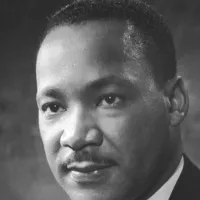
Martin Luther King Jr was a pivotal leader in the...
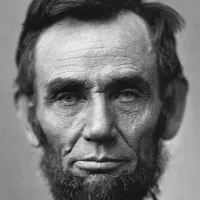
Abraham Lincoln the th U S President served from to...

Martin Luther a German priest theologian and author was a...
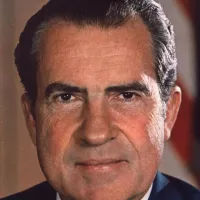
Richard Nixon the th U S President served from until...
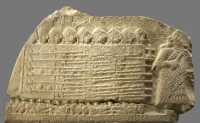
War is defined as an armed conflict involving the organized...
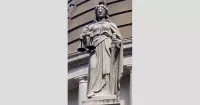
Justice in its broadest sense is the concept of treating...
Trending

Lori Anne Loughlin is an American actress known for her roles in various television series She gained fame for portraying...
6 months ago Private Universities Face Degree Length Challenges in Greece Amidst Legal Debates

8 months ago Haley Stevens Enters Michigan Senate Race, Signaling Key Test for Democrats Direction.
Brandon Lowe is a professional baseball player primarily a second baseman currently playing for the Tampa Bay Rays in MLB...

7 months ago Lewis Pullman's Sentry costume revealed for 'Thunderbolts' in exclusive first look and interviews.

6 months ago Kate Winslet Discusses Career on 60 Minutes; Pompeo Cut from Film
Popular
Matt and Ross Duffer known as the Duffer Brothers are...

Candace Owens is an American conservative political commentator and author...

XXXTentacion born Jahseh Dwayne Ricardo Onfroy was a controversial yet...

Ilhan Omar is an American politician currently serving as the...

Tom Cotton is an American politician and Army veteran currently...
The Kennedy Center Honors are annual awards recognizing individuals and...
